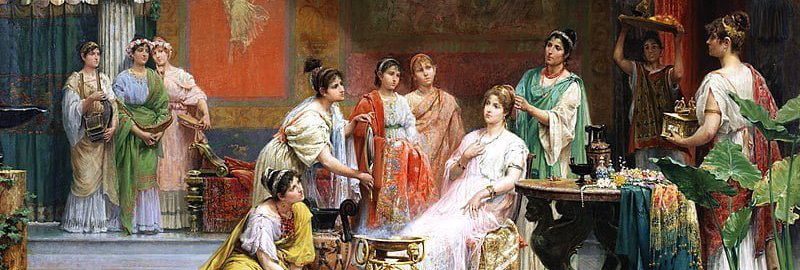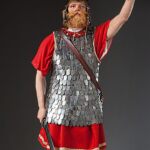Various types of cosmetics already existed before ancient Rome. The place where they were used was Greece or Egypt, from where various beauty products were borrowed. With the expansion of the Empire, cosmetics were also imported from China, Germany and Gaul.
At one time, cosmetics were so widely used (among others by rich matrons or prostitutes) that the law Lex Oppia (189 BCE) was introduced, which wanted to limit their use and excess. Conservative Romans believed that using cosmetics too often and in too large quantities proved women’s immorality. Opponents of their use were, among others stoics who opposed life in luxury.
As mentioned before, cosmetics were used to a large extent by women. For such needs, they had a separate small room that men did not enter. Rich Romans had their own “beauticians”, who were mostly slaves (so-called cosmetae). They were responsible for “embellishing” their lady with cultus (makeup, perfumes, jewelry). Particular attention was paid to perfumes, which were used in large quantities – a nice fragrance was thought to be proof of health. Interestingly, Christians were reluctant to use perfume because they preferred what they received from God1.
The Roman woman extremely cared for the beauty of her skin. So all wrinkles, freckles, spots and blemishes were hidden. The skin should be pale and the cheeks covered with a light pink2, which proved the health of the woman. The nails should be of medium length with rounded tips, tab so that they are not too long and do not interfere with everyday tasks.
But what did a typical Roman cosmetic kit look like? This consisted of with tweezers, teaspoons and an ice scraper. More “luxurious” sets also contained files, spatulas and small pestles that could be used to shred cosmetic substances and herbs for medicinal purposes. Most often they were made of bronze or bone.
Different types of tweezers or tweezers were used to remove eyelashes ingrown into the eye. The scraper could be used to remove granular growths from the inside of the eyelid. Spoons, in turn, were used to apply medicinal substances directly to the eye.
Naturally, to be able to look and evaluate your appearance, there was a hand mirror on the vanity. The Romans thought that sitting too long in front of the mirror proved weak character.
More how what a Roman beautician looked like
As for men – they used perfumes, but in smaller quantities. The man seen with the mirror was considered effeminate. Hair removal was agreed, but moderation was required – too much suggested that the Roman was not a real man; too little that he was too coarse.







